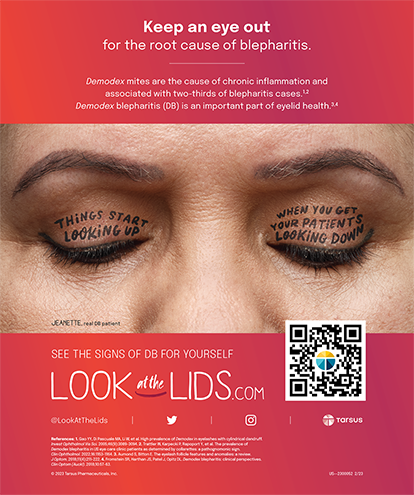
Digital technology has transformed our lives, and its impact on health care is undeniable. In the field of ophthalmology, digitalization is helping advance patient care and usher in a new era of diagnosis, treatment, and collaboration.
Digitalization enables precise and efficient approaches to patient care that were unimaginable just 50 years ago. Advanced imaging techniques such as OCT, biometry, and fluorescein angiography enhance diagnostic accuracy and early disease detection, thus permitting proactive treatment. These and other technologies allow ophthalmologists to visualize intricate structures of the eye, retrieve accurate measurements, and track changes over time, thereby supporting more personalized intervention.
Recently, the field of ophthalmology began incorporating more layer 2 and layer 3 digital networking levels, which provide unique platforms for the integration of AI, machine learning, cloud-based planning systems, metaverse and blockchain, digital ORs, electronic health records, and teleophthalmology. These comprehensive and interoperable platforms enhance workflow, improve patient access to care, and elevate patient monitoring and treatment.
The diversified and wide-ranging application of novel digital protocols—designed through collaboration between data scientists, engineers, ophthalmologists, and industry partners—is the subject of this month’s cover focus. I was honored as the guest medical editor because of my role as a cofounder of the Digital Ophthalmic Society (DOS) along with John Kitchens, MD. Sponsored by ASCRS, DOS is a thought engine centered around leveraging digital tools to enhance patient care, foster innovation, and connect professionals across the globe through online platforms, webinars, and conferences. The society serves as a hub where ophthalmologists, researchers, and technologists can exchange ideas, discuss emerging trends, and explore novel applications of digital technology. DOS aims to empower the ophthalmology community to provide the highest standard of care to patients by incorporating cutting-edge techniques and evidence-based treatments. It also seeks to catalyze groundbreaking advances in the field. One example of this is AI-powered telemedicine, with its potential to transform eye care delivery. Patients can upload images or videos of their eyes for analysis by AI algorithms and remote consultation with a provider. Not only can teleophthalmology powered by AI increase patient convenience, but it can also extend the reach of eye care services, particularly to underserved areas with few specialists.
Flip the purpose, and AI-assisted intraoperative microscopes can help guide novice and young surgeons through difficult cases and events. With the touch of a button, a distressed surgeon operator conceivably could have access to another surgeon anywhere in the world who is viewing the case live in stereoscopic 3D.
I’ve always believed in a collective approach to problem-solving. Pooling the expertise of many can improve the flow of ideas and lead to solutions. Each ophthalmology subspecialty has a unique set of challenges to overcome in terms of disease diagnosis and treatment. Many of the digital solutions explored in the following articles can unite and propel our field.




